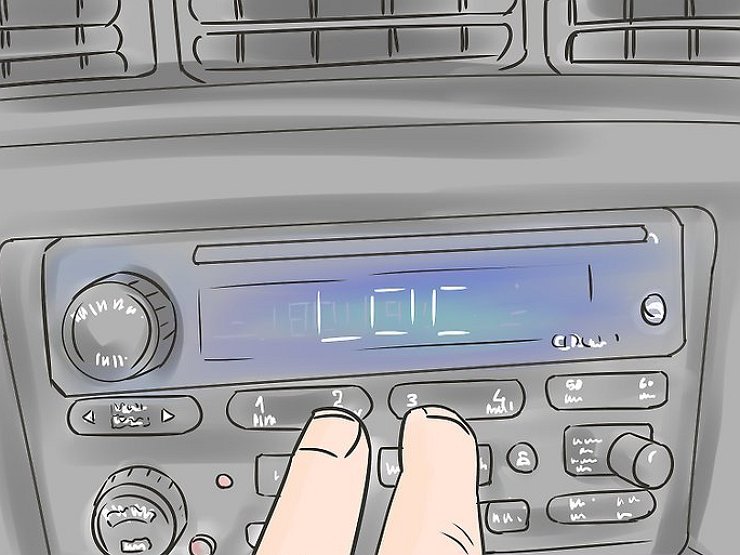
How to rent a car
Content
If it's time to replace your current vehicle, it's a good idea to consider all your buying options, and leasing is one option you should definitely consider.
Renting allows you to drive out of a parking lot in a brand new car without forgoing a large down payment (usually 20 percent on a car loan) or without having to take out a car loan at all. An added benefit of leasing is that you can drive a new vehicle that is under warranty and usually does not require a major overhaul.
Lease payments are also generally lower, so you can afford a more luxurious car and a higher trim level.
While leasing has many advantages, there are also disadvantages and leasing is not for everyone. Understanding the leasing process, its advantages and disadvantages is the key to a successful car rental.
Below are the detailed steps for renting a new car, as well as all the pitfalls you should be aware of before signing the dotted line.
Part 1 of 3: Renting Overview and Budgeting
Step 1: Determine if leasing is right for you. Understanding the leasing process is essential to making the right decision.
First, it is important to understand the basics of how leasing works:
In most cases, a small initial deposit is required. The dealer usually refers to this as the "at signing" number. This number can range from zero to several thousand dollars depending on the vehicle you are renting.
Leases have terms—the number of months you have to make lease payments—from 12 to 48 months. The most common terms are 24 and 36 months.
When the rental period ends, you simply return the car to the dealer or leasing company. It is also possible to buy back the vehicle if you decide to keep it for yourself.
Next, you need to consider the advantages and disadvantages associated with car leasing.
Step 2. Set a budget. Once you have decided that you would actually like to rent your next car, you will need to set your budget.
Do this before you even start looking at vehicles. Take a long, long, and very realistic look at your finances and determine how much you can afford both the monthly rent and the down payment.
Step 3. Consider the terms of the lease. While a longer lease term will lower your monthly payment, most experts recommend limiting your lease term to 36 months. Thus, the car is under warranty for the entire rental period.
Step 4. Determine your mileage limits. A standard lease usually sets a mileage limit of 12,000 miles per year. You can increase the mileage limit, but this will increase your monthly payment. Be realistic as over mileage can be costly.
Step 5: Consider insurance payouts. Don't forget to get an insurance quote to accommodate your budget. The lease requires full coverage on the vehicle at all times.
Part 2 of 3: Car Search
Rental is available for most vehicles. Research and test multiple vehicles to determine which ones you are interested in renting. A few things to consider:
Maintenance costs can be expensive, especially on luxury vehicles. Since you will be responsible for ongoing maintenance costs, it is worth looking into the vehicle's reliability and ongoing maintenance costs.
When searching for a vehicle, do not mention that you are interested in leasing.
Step 1. Search the Internet for leasing deals or discounts. Automakers often offer special discounts on leasing. Details are usually available on the manufacturer's website. Be sure to read the fine print regarding fees and taxes.
Step 2: Look for the best deal. Contact several dealers to find out the price of the car you want. Make sure you are comparing identical vehicles when getting quotes.
- Functions: Discussing the final purchase price before you mention renting will result in a better deal.
Step 3: Get your initial funding in order. Make sure you can afford to pay "on signing". This number will be listed on the manufacturer's website if you purchase dealer specials.
For any vehicles you are interested in leasing, you will need to determine how much you can afford as a down payment. Take a good look at your budget and use the leasing calculator to determine how much down payment you'll need to make your rental affordable.
If you need a loan to cover this amount, arrange financing before going to the dealership. Contact local banks with which you already have relationships, as well as financial companies and credit unions. Talk to a loan officer about your circumstances and ask him or her to explain your loan options. Once you've decided on the amount and type of loan you're interested in, look at prices to get the best interest rate.
Part 3 of 3: Closing the deal
Step 1: Find out the value of the car. Use sites like Truecar and Edmunds to get an idea of how much a specific car you're interested in is selling in your area before heading to a dealership.
Set a target price for the car and be willing to negotiate to get that price.
Step 2: Negotiate the purchase price. Head to the dealership of your choice to negotiate a price. Don't mention what you want to rent when you first talk to the seller.
The rental price will depend on the agreed purchase price of the car. The higher the price you get for the car, the lower your rental payment will be, so your top priority is to find the best deal for the price of the car.
Here are some tips for negotiating:
- Get ready, find out the details about the car you want, as well as any options and trim levels.
- Prepare quotes from other dealers to show to the seller.
- Keep in mind the target price.
- Eat before heading to the car dealership. Buying a car can be a lengthy process, and if you're hungry, you can cut corners to close the deal faster.
- Be prepared to leave if you don't like the deal.
Step 3: Discuss the terms of the lease. Once you've agreed on the purchase price, it's time to negotiate the terms of the lease.
Here are a few leasing terms that you should be aware of before you sit down at the negotiating table:
Capitalization Value (Maximum Value): This is the total value of the car and includes the price you have negotiated plus any taxes and dealer fees. The landlord (car dealer) uses this amount to calculate your monthly payment.
Cap Reduction: This is the upfront payment you will pay to the dealer. The more money you invest, the lower your monthly rent will be. It is also possible to apply the cost of any trade item you may have to the cap reduction.
Your first step is to determine the rental period and mileage compensation. If you think you'll be using more miles per year, negotiate a higher mileage allowance, but remember that this will increase your monthly payment.
Then agree on lowering the cap. The more money you invest, the lower your rent will be. If the manufacturer offers any discounts, make sure they apply as a ceiling reduction.
Step 4: Determine the residual value. An important component of any lease is the residual value. This is the amount the car will be worth when the rental period ends.
Residual value has a big impact on your payment and is set by credit card companies based on historical data. In most cases, the residual value is non-negotiable.
To calculate the rental payment, the lender takes the contract price of the car and subtracts the residual value, which gives them the value of the car that you will use during the lease term.
For example, if the price of a car is $35,000 and the residual value is $20,000 after a three-year lease, you use the value of the car in the amount of $15,000 during the lease term. This works up to a payment of $ 416 per month.
A higher residual value will result in lower monthly payments as you use less of the car's value, so a higher residual value is better in this sense. But, if you end up buying the car at the end of the lease, a higher residual value is less desirable.
Step 5: Review your rental documents and beware of additional fees. Before signing a lease, it is important to review all lease documents in their entirety.
If you do not understand something, be sure to ask for clarification, and if you are not satisfied with the answer, consider leaving. Lease agreements are legal documents, so make sure you understand and agree to all terms.
Dealers often add a commission. All of these fees are negotiable despite what the seller says. They will also vary from dealership to dealership, so when shopping, look for a dealer that avoids these fees. If the seller is unwilling to negotiate or eliminate them, consider contacting a new dealer.
Here are some examples of potential additional fees you may see:
Acquisition Fee: Also referred to as the Document Fee and is charged at the start of the lease.
Disposal Fee: This fee applies if you return the vehicle and do not rent or purchase a new vehicle from a dealer.
Buy Option Fee: This is the fee the dealer charges if you choose to purchase the vehicle at the end of the lease term. The amount of this fee can vary significantly.
Step 6: Sign the lease. Once you are comfortable with all the terms of the lease, sign the lease agreement and hit the road in a new car.
Leasing a car isn't for everyone, but if you do your research and negotiate a great car price, leasing can be a great purchase choice. Hopefully, now you have a clear understanding of the leasing process and you can close an incredible deal to buy the car of your dreams.

